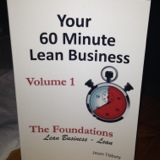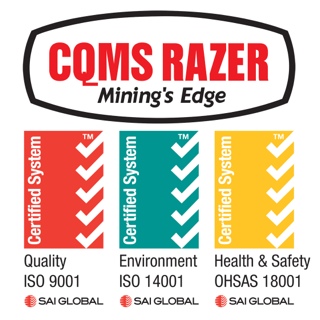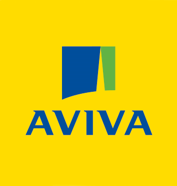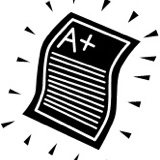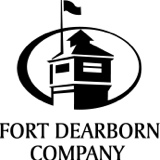Information
-
Document No.
-
Audit Title
-
Client / Site
-
Conducted on
-
Prepared by
-
Location
-
Personnel
-
Use the sliders to record the businesses level of achievement for each topic
1.0 - Business Culture
-
1.1 Management communicates organisational objectives with all employees and gives feed back on employee satisfaction survey at least annually with opportunity to discuss employee satisfaction.
-
1.2 Employees are able to accurately describe what are the company's objectives and how their job help the company to achieve those objectives.
-
1.3 Employees at every level are empowered to work in groups to address improvements in all aspects of the business ( Quality, Cost, Delivery, Improvement, Safety, Morale, Environment)
-
1.4 Operational technical support and support staff routinely go to gemba to assess actual situation and talk to the workers.
-
1.5 There is good effective communication between shifts or at startup under single shift circumstances
2.0 - Lean Culture
-
2.1- The Organisation has developed a lean strategy that aligns with the current policy deployment and has key milestones and deliverables.
-
2.2- Senior management team has been trained in lean business and are active in deployment.
-
2.3- There is a dedicated resources for continuous improvement in the business with necessary resources, organisation and infrastructure in place.
-
2.4- Employees have been trained in CI methods and understanding of Lean Business methodology. Be satisfied by independent questioning of employees.
-
2.5- Employees understand common performance metrics to monitor and improve processes.
-
2.6- Continuous improvement projects are structured, planned and time bound with milestones
-
2.8- There are processes in place to solicit the ideas from the work group/employees and recognise the success of these activities conducted by the work group.
-
2.9- The results of CI activities are communicated throughout the organisation.
-
2.10- Continuous improvement have been rolled out beyond the shop floor.
3.0 - 5S and Visual Communication
-
3.1- The work areas are generally clean of all unnecessary production material, equipment and scraps.
-
3.2- Aisles are kept clear of all obstructions.
-
3.3- Floor markings clearly distinguish work areas, paths, and material handling aisles.
-
3.4- Signs clearly identify work areas, inventory, inspection zones etc.
-
3.5- All employees are considerate of housekeeping and operators consider daily cleaning and put away activities as part of their job.
-
3.6- There is a place for everything and everything has a place, consider containers, tools, racks, gauges, and fixtures clearly marked and labeled.
-
3.7- Standardised visual management boards are throughout the business and contain key information such as job training, safety , QA data, operational measurables And problem countermeasures.
-
3.8- Display boards are frequently updated for QA and productivity data (target v actual data) Operators receive regular feedback on team performance.
-
3.9- Andon signals are used to call for assistance when a problem is encountered by a worker or machine.
-
3.10- Check sheets or process describe and track the top defects (internal and external) are posted and updated for each workstation. Each worker is aware of the key quality points and defect history of the process they are doing, samples or photographs are posted to aid judgement.
4.0 - Standardised Work
-
4.1- A Standard Operating Procedure (SOP) or SWI have been developed for each production process, SOP contain cycle times and process task sequence for each process. SOP's are controlled documents and up to date.
-
4.2- SOPs are used to train operators for every production process, show evidence of training log book.
-
4.3- Each production process has an SOP posted within direct view of the operator
-
4.4- SOPs are in a format that allows ease of understanding and training.
-
4.5- Each process has been designed to be completed within a standard cycle time
-
4.6- Operators provide input and are involved in the process of job design and standardisation.
-
4.8- Frequently repeated, non production operations in the plant are standardised, such as changeover routines QA equipment checks
-
4.9- SOPs throughout the plant are regularly audited for completeness and adherence.
-
4.10- Business indicates an understanding of TAKT time. Evidence of use through monitoring performance.
5.0 - TPM
-
5.1- All operators and managers know the aspects of TPM
-
5.2- All employees have knowledge of and adherence to safety regulations relative to their work area.
-
5.3- There are planned maintenance schedules for all key equipment and tools including lubrication plans
-
5.4- Machine productivity, breakdowns and repairs are recorded and analysed to identify improvements.
-
5.5- There is a managed spare part inventory for each equipment type.
-
5.6- Operators preform and analyse simple maintenance tasks according to designated check sheets and standards on a daily basis.
-
5.7- The maintenance performance is continually monitored i.e. % of maintenance complete, response time, OEE
-
5.8- The equipment maintenance performance is regularly monitored and resources allocated.
6.0 - Quick Changeover
-
6.1- Changeover schedules are communicated in enough time to enable adequate preparation of tools, material and equipment.
-
6.2- Changeover times and abnormalities are visibly tracked and countermeasures developed.
-
6.3- Teams have received training in quick changeover procedures and are actively improving methods.
-
6.4- Changeover process have been subjects of detailed process analysis , such as motion,time studies and videotaping.
-
6.6- All tooling, equipment and materials required for the next production run are prepared as per documentated process and located close to the point of use and highlighted when ready.
-
6.7- When not in use all equipment, tools, fixtures are stored in a neat, orderly fashion and are maintained in good working order.
-
6.8- Special tools, fixtures and equipment have been designed to reduce change over time where cost effective.
7.0 - Quality and Error Proofing
-
7.1- There is a formal quality feedback process that allows operators to to receive feedback from both internal and external customers. QA System
-
7.2- Defective items are immediately detected when they occur in the production process. Very seldom does a bad part make it to a downstream process or to a customer. Check reject loop and hold areas
-
7.3- A quality system exists to address supplier quality issues in the production process.
-
7.4- Workers understand the basics of error proofing.
-
7.5- There is a formal system in place for either production operators or teams to analyse defects and identify error proofing opportunities.
-
7.6- Evidence exists to prove error proofing devices have been implemented to eliminate the top production defects for each work area in the plant.
-
7.7- Error proofing devises have been installed and are visually identified and monitored for effectiveness and are maintained in a sound working order.
-
7.8- Error proofing devices and methods have been applied to prevent defects in both manual and automated processes
8.0 - Level Production
-
8.1- There is an effort to level production schedules by spreading the monthly customer demand evenly over the period, so that the daily production volume for part does not vary substantially.
-
8.2- There is evidence of effort to level production schedules working to meet customer requirements over the long and short term.
-
8.3- The production rate throughout the manufacturing system has been defined around the TAKT time.
-
8.4- Kanban quantities are reviewed so that the reorder points and quantities Min,Max and safety stock levels are correct to the current production rate
-
8.5- Change over in production are made to support the mix of customer demands and are not supported my long production runs, WIP, Inventory Buffers or daily short ship emergencies
9.0 - Problem Solving
-
9.1- Is there a focus in the company towards skilled people to work through issues, problems and difficulties that arise in the work environment. (Problem solving tools root cause analyse)
-
9.2- Do people understand the importance of collecting and using data so that the invisible becomes visible.
-
9.3- Does the company have the ability to identify the different strengths in people
-
9.4- Are people across the site willing to be involved in problem solving, addressing the source of the problem instead of the "quick fix"
-
9.5- Does the focus of problem solving involve facts rather than personalities
-
9.6- Do people work together in teams with great ease?
10.0 - Statistical Control
-
10.1- Does the company have a method of improving productivity and profitability via the application of statistical problem solving tools to identify and quantify waste and indicate steps for improvement?
-
10.2- Does the company measure the cost of poor quality?
-
10.5- Are metrics aligned with the company strategy , linked to bottom line results.
-
10.6- Are metrics related to important, regular activities and processes
-
10.7- Are metrics used to identify what factors are critical to the quality for your customer
-
10.8- Are statistics displayed on visual controls throughout the site and is there support to promote and provide information about these measures?
-
10.10- Does the company know what to measure and why?
SignOff
-
Add signature
